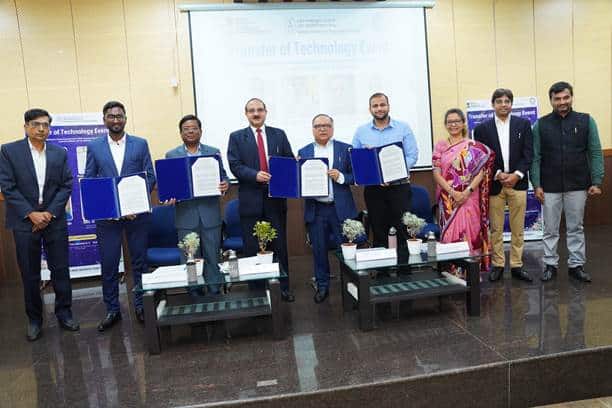Advancements in Conductive Ink Technology

In a significant event held at NIT Warangal, the indigenous know-how of silver nanowire-based conductive ink technology was successfully transferred to two promising startups. M/s Chematico Technologies Private Limited, incubated at IIT Ropar, and M/s Vasanthbala Functional Materials Pvt Ltd, incubated at NIT Warangal, are now poised to leverage this advanced technology. This transfer marks a crucial step in enhancing India’s capabilities in the electronics sector, particularly in the production of conductive inks and adhesives.
The Growing Market for Conductive Ink
The global market for silver nanowire-based conductive ink and adhesive is projected to exceed $16.87 billion by 2032. This growth is driven by a rapid increase in demand from various sectors, including electronics, semiconductors, solar photovoltaics, and RFID technology. The surge in these industries has created a robust need for high-quality conductive materials. Currently, India imports conductive ink worth approximately $15,72,000 annually, primarily from countries like the United States, China, the Netherlands, the United Kingdom, and Taiwan.
The increasing reliance on advanced electronic components and flexible devices has made conductive inks essential. They are used in a variety of applications, from printed circuit boards to wearable technology. As the demand for innovative electronic solutions continues to rise, the need for locally produced conductive inks becomes even more critical. By developing this technology domestically, India can reduce its dependence on imports and strengthen its position in the global market.
Technology Transfer and Its Significance
The technology transfer event was made possible through a project funded by the Ministry of Electronics and Information Technology (MeitY), Government of India. The initiative was jointly implemented by Prof. Sarang Gumfekar from IIT Ropar and Prof. Shirish Sonawane from NIT Warangal. The transferred technology focuses on the production of silver nanowire-based conductive ink, which is crucial for various electronic applications.
Silver nanowire-based conductive ink is widely used to repair or enhance circuits on printed circuit boards. Its applications extend to flexible electronics, such as foldable devices and screens, RFID tags, wearable devices, sensors, and solar panels. The versatility of this technology makes it a valuable asset for startups looking to innovate in the electronics sector. The successful transfer of this technology not only empowers these startups but also contributes to the growth of the semiconductor ecosystem in India.
Insights from the Event
The event was graced by notable figures, including Shri Bhuvnesh Kumar, IAS, Additional Secretary and CEO of UIDAI, MeitY, GoI, and other dignitaries from the Ministry and educational institutions. During his address, Shri Bhuvnesh Kumar emphasized the transformative potential of the indigenous nanosilver-based conductive ink technology. He highlighted its applications in flexible electronics, electronic packaging, displays, and solar photovoltaics. Kumar congratulated the startups on their achievement and urged them to focus on large-scale manufacturing of silver nanowires and conductive ink in India. He pointed out that this technology could significantly reduce India’s reliance on imports for advanced electronic materials. By fostering local production, India can enhance its self-sufficiency and innovation in the electronics sector, paving the way for a more robust and competitive industry.
Observer Voice is the one stop site for National, International news, Sports, Editor’s Choice, Art/culture contents, Quotes and much more. We also cover historical contents. Historical contents includes World History, Indian History, and what happened today. The website also covers Entertainment across the India and World.

